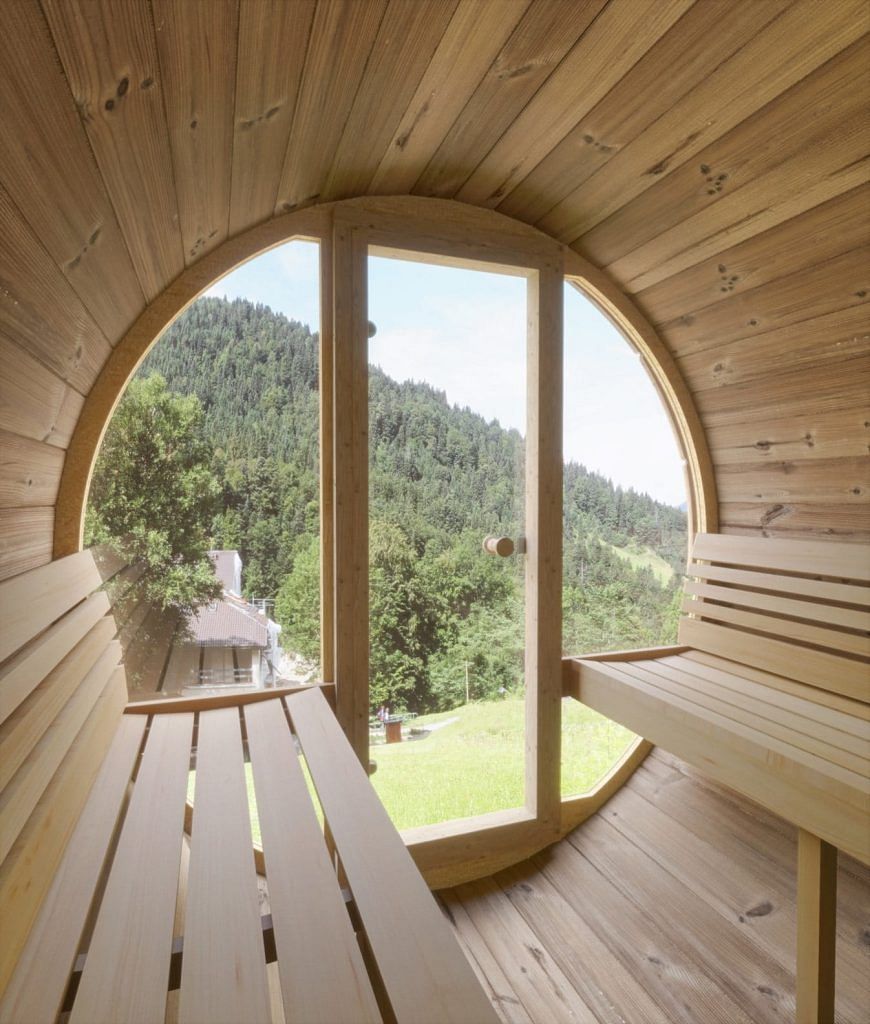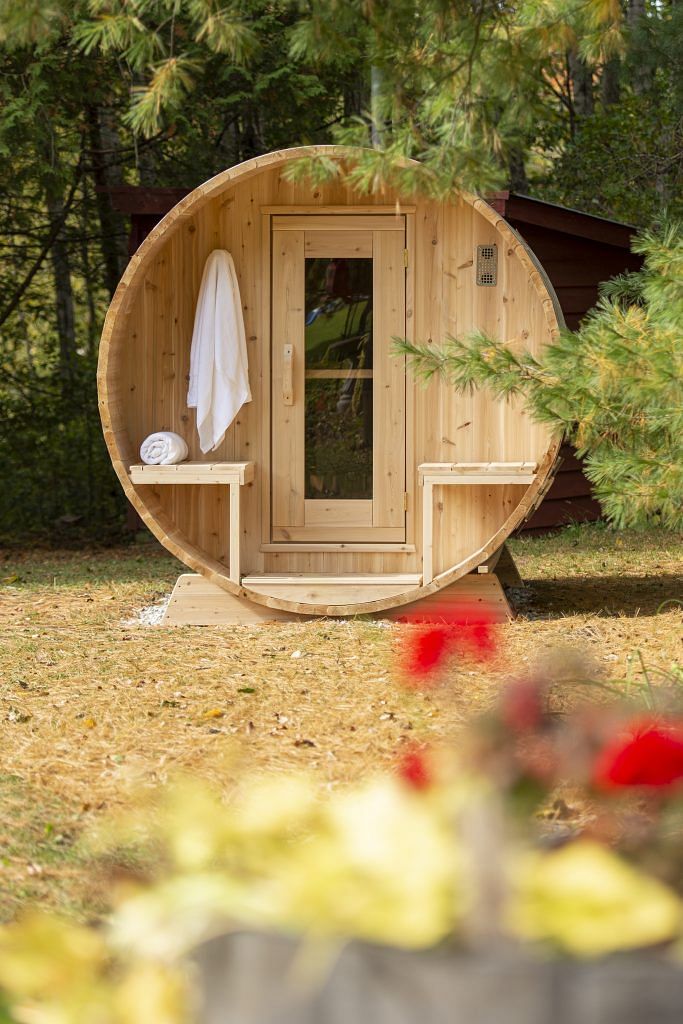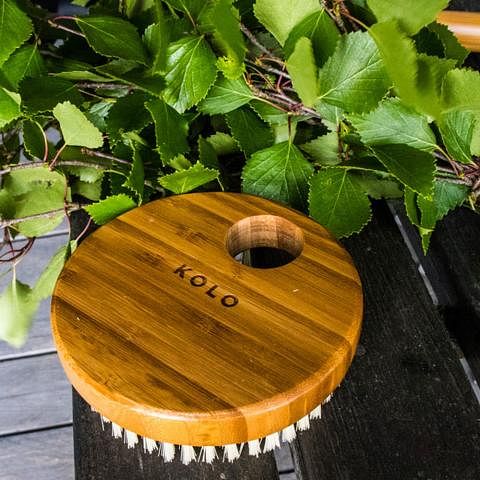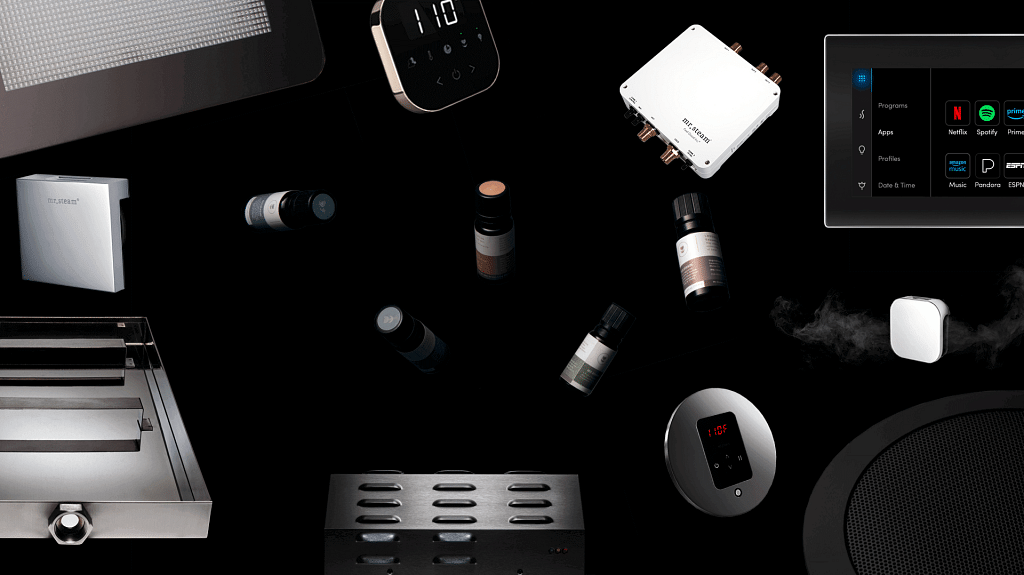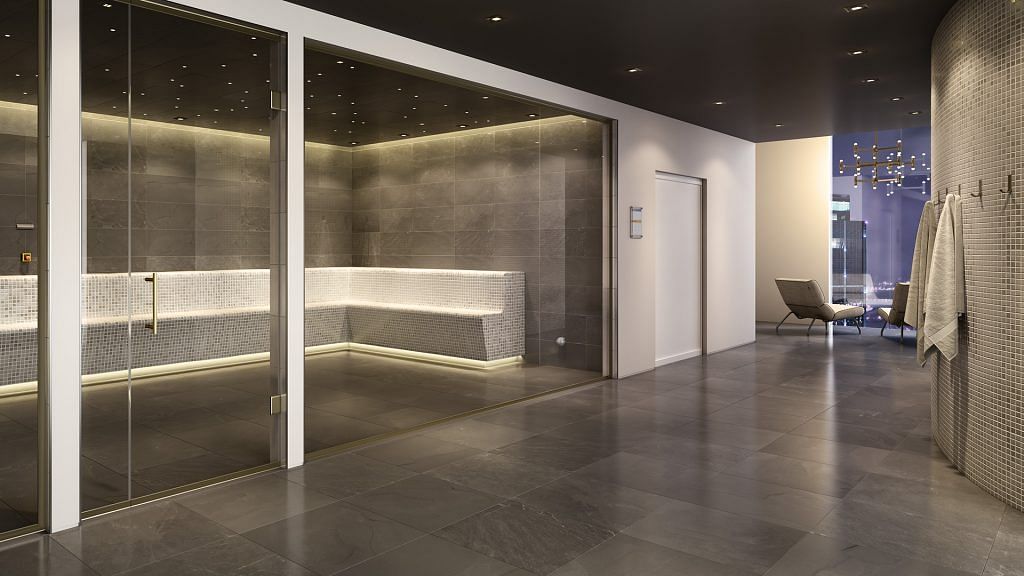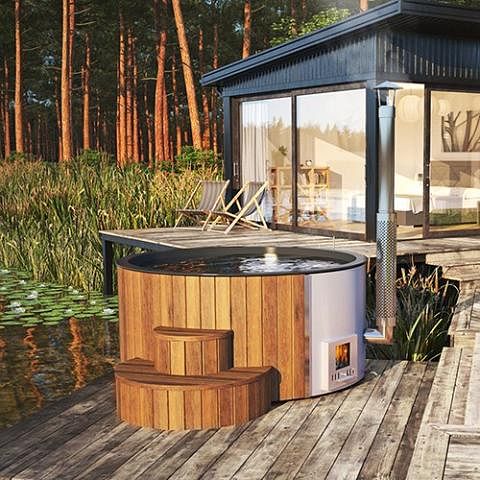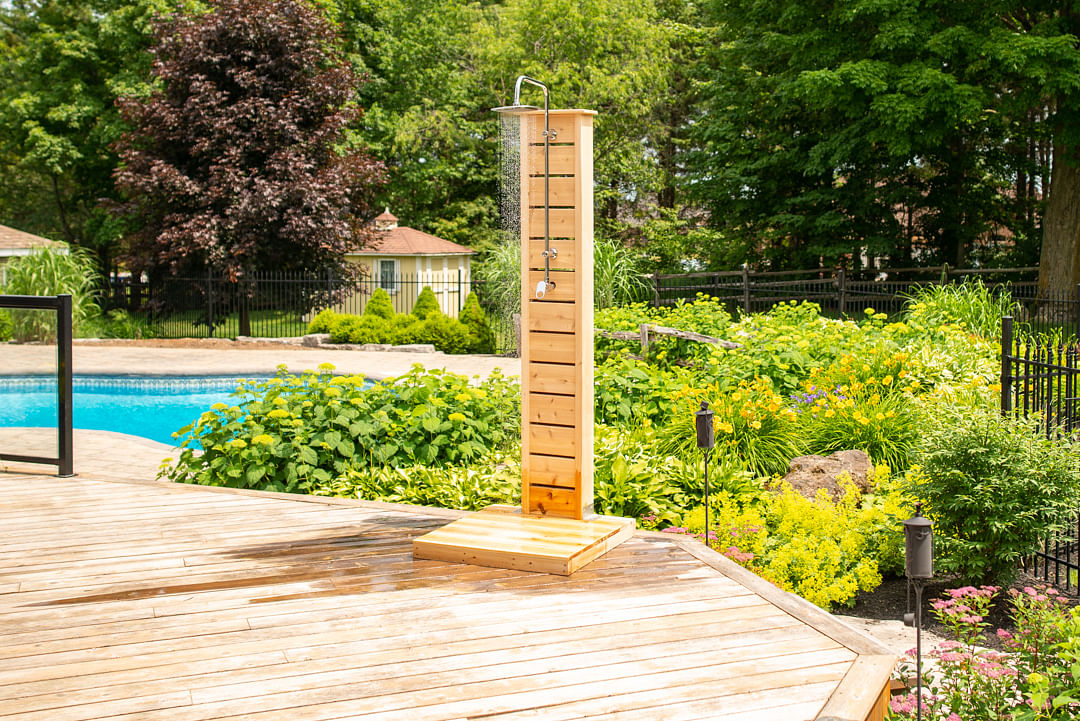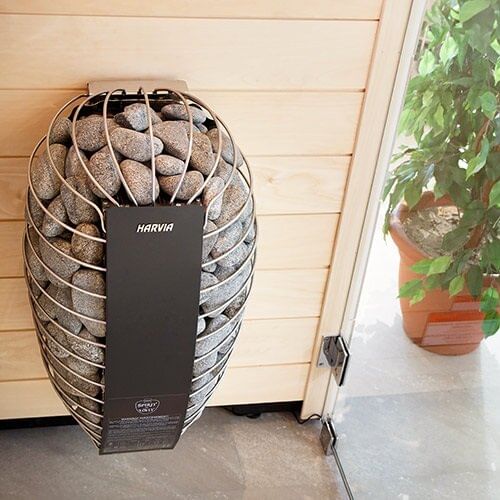Sauna
Choosing a Sauna Heater: Find Your Perfect Type of Sauna Heater (2025 Buying Guide)
Building or upgrading your sauna? The heater you choose transforms your entire experience, from the speed at which you achieve the perfect temperature to the quality of heat that soothes your muscles. With so many options flooding the market in 2025, finding the right sauna heater can feel overwhelming at first. But here’s what matters most: matching your heater to your specific sauna size, usage patterns, and comfort preferences.
This guide cuts through the confusion by breaking down each heater type, sizing requirements, and key features that actually impact your daily sauna sessions. Whether you’re installing a cozy indoor retreat or building an outdoor barrel sauna, you’ll discover exactly which heater delivers the consistent warmth and reliability you’re looking for.
What Is a Sauna Heater and Why Does It Matter
Your sauna heater is the heart of your entire setup. It’s what transforms a wood-lined room into that therapeutic sanctuary you crave. Think of it as the engine that drives your sauna experience, controlling not just temperature but also humidity levels and heat distribution throughout the space.
The heater’s role extends far beyond simply warming the air. It determines how quickly your sauna reaches optimal temperature (typically 150-195°F for traditional saunas), how evenly heat spreads across the room, and how comfortably you can adjust conditions for different users. A well-chosen heater maintains consistent temperatures without dramatic fluctuations, ensuring every session feels just right.
Different heater types influence your sauna experience in distinct ways:
- Electric heaters offer precise temperature control and even heat distribution, making them ideal for regular home use.
- Wood-burning heaters create that authentic, radiant heat with the cozy ambiance of a crackling fire.
- Infrared heaters work differently altogether, directly warming your body rather than heating the air, which some find more comfortable and therapeutic.
The size and power of your heater also matter tremendously. An undersized heater struggles to reach proper temperatures and works overtime, leading to a shorter lifespan and higher energy costs. An oversized heater cycles on and off frequently, which creates uncomfortable temperature swings and wastes energy.
Types of Saunas You Can Choose From
Here are the main different types of saunas:
1. Electric Sauna Heaters
Electric sauna heaters have become the go-to choice for modern home saunas, and it’s easy to see why. These units heat sauna stones using electric elements, providing reliable and consistent heat output that you can control with precision.
Here’s how it works:
Electric heaters use heating elements (similar to those in electric ovens) to warm sauna stones, which then radiate heat throughout the room. Most models include built-in temperature controls and safety features like overheat protection. When you pour water on the heated stones, it creates that satisfying burst of steam that defines the traditional sauna experience.
Here’s how it looks:
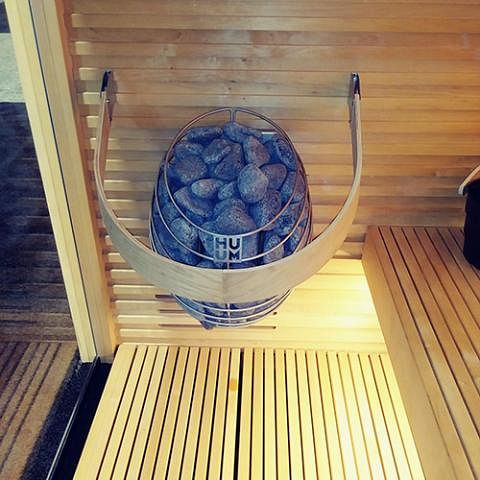
HUUM DROP 4.5 DROP Series 4.5kW Sauna Heater
Pros of electric saunas
- Very easy to install
- Have a fast heating time
- Comes with precise temperature controls
- Low maintenance, no ash or soot to clean up
- Provides steady and even heat distribution
Cons of electric saunas
- Cannot be used during power outages or off-grid situations without a generator
- High operating costs because of the electricity use
- High-end models with premium features are expensive
2. Wood-Burning Sauna Heaters
For many sauna enthusiasts, nothing beats the authentic experience of a wood-burning heater. These traditional units create intense, dry heat while filling your sauna with the gentle crackle and warm glow of a real fire.
Wood-burning heaters excel at creating intense, radiant heat that penetrates deeply and feels incredibly therapeutic. They can reach higher temperatures than most electric units and maintain that heat for extended periods, making them perfect for long sauna sessions or multiple users throughout the day.
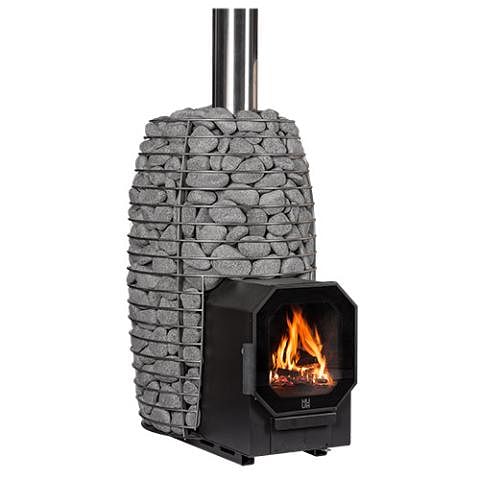
HUUM HIVE Flow LS Wood-Burning Sauna Stove w/ Firebox Extension, 9.8kW
The ritual of building and maintaining the fire adds to the overall sauna experience. There’s something special about the natural rhythm of adding wood, adjusting airflow, and tending to the fire that electric heaters simply can’t replicate.
For instance, this user on Reddit loves it because the löwly “tends to be smoother than the electric one.”

How it works:
Wood sauna heaters contain metal heating elements similar to those in an oven. When powered on, these elements heat up and warm the surrounding sauna stones. The stones then radiate heat throughout the room, creating that dry, enveloping warmth. Just like electric sauna heaters, you can pour water over the hot stones and produce a burst of steam (löyly) – the authentic sauna experience.
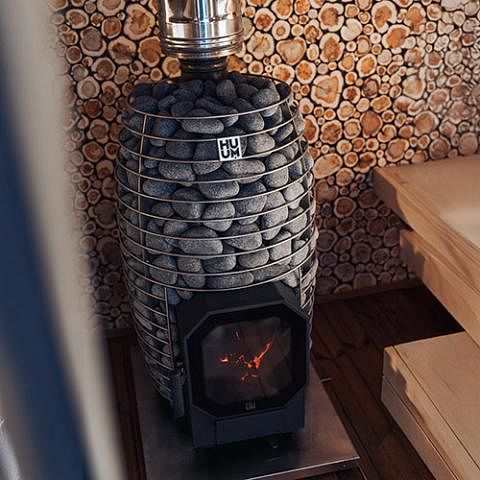
Also, most models, like the HUUM wood burning heaters, come with digital controls, timers, and safety features like automatic shut-off and overheat protection.
Pros of traditional sauna
- Offers an authentic, traditional sauna experience.
- Produces deep, radiant heat that many find satisfying.
- Works off-grid and is perfect for cabins or rural locations.
- Adds a sensory element (crackling fire, scent of wood) to the experience.
- No electricity is required to operate, which eliminates the need for energy bills.
Cons of traditional sauna
- Requires a chimney or proper ventilation for safe operation.
- It requires a complex installation compared to electric models.
- Heating the sauna takes longer.
3. Infrared Sauna Heaters
Infrared heaters use a completely different approach to sauna heating.
Instead of warming the air, these panels emit infrared waves that directly heat your body, creating a gentler but deeply penetrating heat experience.
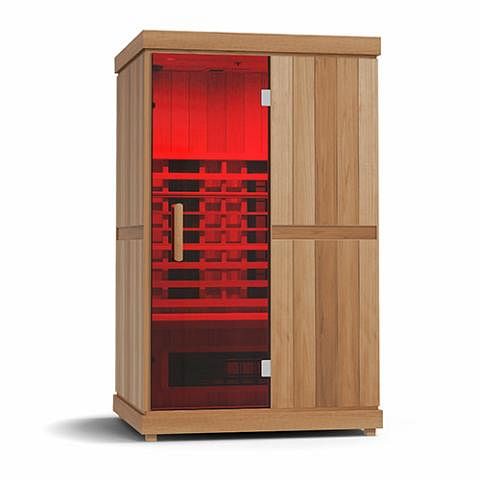
Finnmark Designs FD-2 Full Spectrum Infrared Sauna
Infrared panels use ceramic or carbon elements to emit far-infrared waves, the same type of energy that comes from the sun. This energy penetrates about 1.5 inches into your body, warming you from the inside out rather than just heating your skin surface.
The panels are flat and can be mounted on walls, in corners, or even on the ceiling, which makes them very space-efficient.
Pros of infrared saunas
- Directly heats the body and not the surrounding air
- Lower temperature makes it comfortable for longer sessions
- Quick heat-up times compared to electric and traditional sauna heaters
- Lower electricity consumption compared to electric saunas
- Usually compact and energy efficient.
- Most quality panels are designed to emit low EMF (electromagnetic field) levels for safety.
Cons of infrared saunas
- Does not offer the traditional steam and heat experience
- Lacks the “löwly” effect as water cannot be poured on the panels
- May not reach the intense temperatures of traditional saunas
For a deeper dive into the technical specifications and performance characteristics of each heating technology, consult our detailed guide on types of sauna heaters which covers the latest developments and innovations in sauna heating technology.
4. Gas Sauna Heaters
Gas sauna heaters offer powerful performance, fast heat-up times, and consistent temperatures, making them a popular choice for commercial facilities, large saunas, and off-grid setups. While they’re less common in residential settings due to installation complexity, they’re highly efficient and capable of heating larger sauna rooms more economically over time.
Gas heaters are split into two options:
- Natural gas heater: Natural gas heaters connect to your home’s gas line, providing an unlimited fuel supply and typically lower operating costs.
- Propane gas heaters: Propane models use refillable tanks, offering more installation flexibility but requiring periodic refuelling.
Both types heat up quickly and can maintain consistent temperatures even in larger saunas. They’re instrumental in areas with expensive electricity or frequent power outages.
Here’s how it works:
Gas sauna heaters use a gas burner (natural gas or propane) to generate a flame that heats a metal heat exchanger or directly warms the sauna stones.
Once the rocks are hot, they radiate heat into the sauna room, just like electric or wood-burning models. You can pour water over the stones to create steam (löyly). Most models include built-in thermostats, ignition systems, and safety features like flame failure protection.
Pros of gas sauna heaters
- Rapid heat-up times.
- Low operation costs over time.
- Excellent for heating large sauna rooms or commercial installations.
- Produces dry, steady heat with the traditional steam when water is added.
Cons of gas sauna heaters
- It’s costly and complex to install.
- The propane tanks need periodic refuelling and safe storage.
- Not as beginner-friendly for residential users compared to electric options.
How to Choose the Right Sauna Heater for Your Needs
To choose the right sauna heater for your needs, here are some of the factors to consider:
1. Sauna Size
The first thing to consider when choosing a sauna heater is the size of your sauna. As we mentioned above, using an undersized sauna won’t reach or maintain your desired temperature efficiently. On the flip side, an oversized heater might overheat your sauna or consume more energy.
The rule of thumb is to use 1kW for every 45 – 50 cubic feet (or 1.3m3). For example, a 6x8x7 foot sauna equals 336 cubic feet. This means that this sauna would need roughly a 7kW heater.
However, real-world conditions demand adjustments to this baseline. For instance, a sauna that works perfectly with a 6kW heater indoors might need 8kW or more when installed outside in cold climates. Be sure to consult with a sauna heater expert before making your final choice.
2. Heat-Up Time
Nobody wants to wait an hour for their sauna to reach the proper temperature. Understanding heat-up expectations helps you choose a heater that matches your lifestyle and patience level.
Typically, electric heaters require 30-60 minutes to reach optimal temperature, depending on size and power output. A properly sized 8kW heater in a well-insulated 6-person sauna usually hits 160-180°F within 45 minutes. Undersized heaters might take 90 minutes or more, while oversized units can reach the desired temperature in 20-30 minutes.
Several factors influence actual heat-up time beyond heater type, for instance, the starting temperature. A sauna starting at 70°F reaches the target temperature much faster than one starting at 32°F during winter. Humidity levels also affect heating efficiency, as your heater must evaporate moisture before raising the air temperature.
However, some saunas like the HUUM and Harvia models come with smart controls that allow you to pre-heat the sauna before you’re ready to use it.
This brings us to the next:
3. Control Options
The control options available also affect your sauna experience. Manual controls, for example, offer the basic on/off switches and mechanical timers that provide limited customization. But most modern users prefer heaters with digital controls.
With these options, you can set exact temperatures, program heating schedules, and monitor conditions remotely. Many systems include smartphone apps, letting you start your sauna from anywhere or adjust settings without leaving your bench.
HUUM heaters, for example, come with a proprietary smart UKU sauna control system. The UKU system allows you to control temperature, heating time, and even connect extra premium features such as lighting, ventilation, and a steamer. The UKU system can be managed from a mobile app on your smartphone or a wall-mounted panel in the sauna:

4. Energy Efficiency
If you plan to use your sauna frequently, energy efficiency plays a big role in long-term operating costs. Understanding how much energy your heater uses can help you avoid unexpected electricity bills.
Electric sauna heaters are the most efficient of all the sauna heaters. Generally, these heaters convert over 95% of the electricity they use into heat. However, energy consumption still adds up.
For example, an 8kW heater running for one hour uses 8 kilowatt-hours of electricity. At typical residential rates, that’s around $1–$2 per session.
While this might seem reasonable for occasional use, the costs can quickly add up if you plan to use it daily.
Overall, to keep your sauna energy efficient:
-
Ensure it’s well insulated. A well-insulated sauna retains heat better, meaning your heater doesn’t have to work as hard or run as long.
-
Ensure the thermostat is precise and accurate. Precise temperature control ensures your heater isn’t using more power than necessary.
-
Use pre-set timers and scheduling to avoid accidentally leaving the heater on too long.
-
Choose a heater that matches your sauna’s size. Oversized units heat quickly but waste energy; undersized ones run longer to maintain temperature.
5. Budget and Installation Costs
When planning your sauna heater purchase, consider both the upfront price and the installation costs. Heater prices vary widely depending on type, power, and features. For example, you’ll find basic electric models for small saunas start around $600–$800, while premium units with advanced digital controls can cost $5,000 or more.
Another thing to consider is the installation costs. This is because sometimes, installation is often a bigger expense than the heater itself.
Usually, electric heaters require a dedicated 220–240V circuit that matches the heater’s amperage. This means hiring a licensed electrician, which costs $500–$1,500, depending on the distance from your main panel and local labor rates. If your home has an older electrical system, you may also need a panel upgrade, and that’s an extra $1,000–$3,000 to handle the high load safely.
Wood-burning heaters are even more expensive. They require a chimney, fireproof clearances, and sometimes building permits. Professional installation usually ranges from $1,000–$3,000, although you can still DIY it to cut costs. Be sure to check local regulations, as some areas prohibit wood-burning units altogether due to fire or air quality concerns.
6. Designs
The visual appeal of your sauna heater matters more than you might think. It’s the focal point that creates that authentic sauna ambiance you’re seeking. Beyond aesthetics, design plays a crucial role in heating efficiency and safety, making it essential for both style and function.
Let’s go over the types of designs available:
Traditional tower heaters are a popular choice for those who want the classic sauna feel. They feature stainless steel housing and large rock chambers, which allow for even heat distribution and create that burst of steam when you pour water over the stones (löwly). Their vertical design also saves floor space.
If you prefer a modern, minimalist look, wall-mounted heaters are a great option. These compact units attach directly to the wall, freeing up space and blending seamlessly with contemporary interiors. The HUUM Dive sauna heaters are good wall-mounted options:

HUUM Drop 7.5STU Pkg Drop Series 7.5kW Sauna Heater Package
7. Digital features
Modern sauna heaters now come with advanced digital features that make sessions more convenient, efficient, and safe. The biggest upgrade is smart connectivity.
Imagine finishing your workout and walking into a perfectly preheated sauna without waiting 30 – 40 minutes for it to warm up. Some systems even send alerts when the desired temperature is reached or allow you to set custom heating schedules.
For example, the HUUM Drop electric heater integrates with the HUUM mobile app, letting you start the sauna from anywhere and monitor the temperature in real time. It also offers safety features like automatic shut-off and error alerts, giving you peace of mind whether you’re home or away.
Safety monitoring is another benefit of digital systems. Built-in sensors detect overheating or electrical faults and automatically shut the heater down while sending an alert to your phone. It comes as an add-on on major HUUM sauna heater models. This is how it looks:

Sauna Heater Placement and Safety Tips
After purchasing your heater, here are some tips on how to place it in your sauna:
1. Clearance Requirements and Positioning
Safe heater placement begins with understanding minimum clearance requirements that protect both users and your sauna structure.
For example, electric heaters require 3 feet of clearance from combustible materials in front of the heater and 6 inches to the side and rear. However, this depends on the models. Be sure to check the manufacturer’s manual for the safety placement and positioning.
In terms of positioning, be sure to position your heater so the control panel remains easily accessible without requiring users to reach over hot surfaces. Avoid placing it directly below benches where someone might accidentally contact hot surfaces while adjusting their position.
2. Ventilation and Airflow
Proper ventilation is essential for both safety and comfort in your sauna. This is because good airflow prevents the heater from overheating and helps maintain an even temperature throughout the space.
To achieve this, install intake vents near the floor so fresh air can flow over the heater and rise naturally through the room. Also, place exhaust vents on the opposite wall, about 6–12 inches below the ceiling, to create a steady convection current that circulates warm air evenly. See this example:
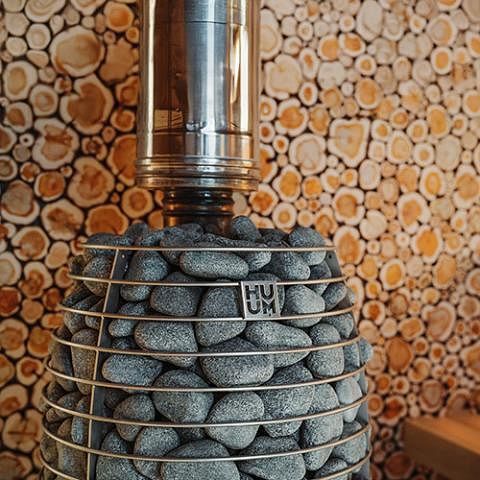
Never block these vents with towels, benches, or accessories. Obstructed airflow can lead to overheating and create uncomfortable hot spots, compromising both safety and your sauna experience. Always keep air pathways clear so the heater gets enough cooling airflow during operation.
3. Electrical Safety Essentials
Electrical safety in saunas is critical and should always be handled by a licensed professional. Your heater needs its own dedicated circuit; never share it with other appliances, as this can cause overload and fire hazards.
Generally, the circuit must match the heater’s specifications exactly. For example, if you install a 240-volt, 40-amp heater, it requires a 240-volt, 40-amp circuit with proper GFCI protection to prevent electrical shock in a humid environment.
4. User Safety Protocols
Establish clear safety guidelines for everyone using the sauna to prevent accidents. Never leave children unsupervised, as high heat and hot surfaces can cause burns quickly.
Ensure all users understand the basics, including how to sit safely and when to exit. Post visible reminders about session limits (15–20 minutes for beginners and 30–45 minutes for experienced users) to prevent overheating or dehydration.
For example, many commercial saunas display these rules near the entrance for quick reference.
5. Rock and Water Safety
If your sauna heater uses rocks for heat and steam, always choose stones designed for sauna use.

Cozy Heat Traditional Sauna Stones
This is because regular river rocks or landscaping stones can crack or even explode when exposed to high temperatures and water. You can purchase the right sauna stones from us.
Also, always inspect your stones regularly and replace them at least once a year or sooner if you notice cracks.
Also, store water in a heat-resistant or insulated bucket to prevent it from becoming dangerously hot during sessions. For example, many home saunas use traditional wooden pails that stay cool to the touch and maintain water temperature safely. Complete your sauna setup with essential components from our sauna heater accessories collection, including specialized mounting hardware, temperature sensors, and safety equipment designed to enhance your heater’s performance and longevity.
Costly Mistakes to Avoid When Buying a Sauna Heater
1. Undersizing Your Heater
The most expensive mistake sauna buyers make is purchasing an undersized heater to save money upfront. Think about it:
Although a 6kW heater is less expensive than an 8kW unit, it struggles to achieve proper temperatures and will require continuous operation to maintain heat, which increases the overall medical bills.
So, it’s best to be sure of your sauna heater size before you make a purchase. Calculate your sauna’s cubic footage carefully, then factor in additional considerations like insulation quality, outdoor installation, and ceiling height.
When in doubt, size up rather than down. Oversized heaters reach temperature faster, cycle less frequently, and last longer than units running at maximum capacity.
For a personalized recommendation, contact any of our sauna experts.
2. Ignoring Electrical Requirements
Ignoring electrical requirements is another costly mistake people make when buying a sauna heater. Many homeowners discover too late that their electrical panel can’t handle the load or lacks the correct breaker type. And when this happens, they’ll have to pay extra to upgrade it.
To avoid this, consult a licensed electrician before you buy the heater, not after. Have them check your panel’s capacity, available circuits, and the distance from your planned sauna location.
For example, if your sauna is in a detached building or far from the main panel, you might need trenching for underground cables or complex wiring through finished walls, both of which can significantly increase installation costs. Confirming these requirements upfront helps you budget accordingly and avoid extra expenses.
3. Overlooking Local Codes and Permits
Overlooking local codes and permits can lead to costly fines, failed inspections, and even forced removal of your sauna. Building regulations vary widely by location, so what works in one area may be illegal in another.
For instance, some municipalities limit high-amperage electrical appliances or require dedicated GFCI circuits for sauna heaters.
Before buying your heater, contact your local building department to confirm requirements. For example, many U.S. states prohibit wood-burning heaters in residential neighborhoods because of air quality rules.
In contrast, others require electrical work to be inspected before the sauna can be used. Knowing these details early saves you from expensive modifications and project delays.
4. Choosing Price Over Quality
Choosing the cheapest heater often leads to higher long-term costs. And here’s why:
Budget models may use low-quality heating elements that burn out quickly, poor insulation that wastes energy, or flimsy controls that fail in high-heat conditions. For example, a $500 heater that needs replacing every three years ends up costing more than a $1,200 model that lasts fifteen years.
Always check the manufacturer’s warranty and customer reviews before buying. High-quality heaters usually include 3–5 years of coverage on heating elements and electronics, while budget options often offer just a one-year warranty.
When comparing models, factor in the total cost of ownership and the purchase price, including energy efficiency, maintenance, and expected lifespan. This approach ensures you get a reliable heater that performs well and saves money in the long run.
5. Inadequate Planning for Maintenance Access
Placing your heater in a hard-to-reach spot may seem convenient at first, but it can lead to major maintenance issues and safety risks later. Heaters installed too close to walls, squeezed into tight corners, or hidden behind benches are difficult (sometimes impossible) to service properly.
That said, plan for easy access from the start. Leave enough clearance so a technician can inspect, clean, and replace parts without dismantling your entire sauna.
For example, some heaters require periodic element replacements or filter cleaning, which can cost more if the technician has to remove benches or wall panels to reach the unit. Good planning now saves time, money, and frustration down the road.
6. Rushing the Purchase Decision
Rushing to buy a sauna heater without proper research often leads to costly mistakes. The last thing you want is to end up with a unit that’s underpowered, incompatible with your electrical system, or lacking key features you want just because someone recommended it online.
Recommendations aren’t bad, but it’s best to do your due diligence before making your final move.
Take the time to create a detailed checklist before purchasing. Include your sauna’s dimensions, available electrical capacity, desired features like WiFi control, and your budget range. Then compare multiple models against these criteria rather than focusing on price or falling for sales pressure.
If you’re still unsure, reach out to any of our sauna experts for a personalized recommendation.
Final Thoughts
A sauna is an investment in your health, comfort, and lifestyle. The heater you choose determines how quickly your sauna heats up, how efficiently it runs, and how safe it is for everyone who uses it.
So, take the time to understand your options, compare features, and ensure everything meets local regulations. If needed, work with certified professionals for installation.
Ready to find the perfect heater for your sauna? Explore our sauna heater collection and choose a model that combines efficiency, safety, and style. If you’re considering a complete sauna solution rather than just the heater, explore our comprehensive review of the top 9 best home saunas to compare complete systems and find the perfect match for your space and budget.

